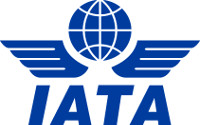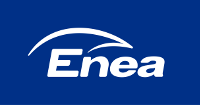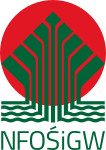| Article Index |
|---|
| Start |
| Photo gallery |
| Previous editions |

"On the Polish market, coal will be burned for many, many years and emission allowances will be needed all the time. The prices of air tickets may increase, the price of heat will rise, apartments and cement will go up as well as food products. The ETS market has an impact and is associated with changes in many sectors, which very often nobody takes into account." - Tomasz Bujacz, Vertis Environmental Finance.
For the sixth time we have organized a meeting dedicated to energy and CO2 emission allowances trading. "VI Emission and Energy Trading Summit" took place in Warsaw on January 29, 2019. The 6th edition was presented in a new formula expanded with issues of emission reduction in the aviation industry and the introduction of the CORSIA system. As part of the event's agenda, in addition to issues related to the CO2 market, we also referred to those common for: CO2, wholesale energy trading and guarantees of origin. As in the previous editions, our conference was an excellent place to exchange views and present positions of individual entities operating on the market.
The introductory speech was given by Paweł Różycki, Deputy Director of the Department of Air Protection and Climate Change in the Ministry of the Environment. The presentation concerned upcoming changes in the EU ETS system after 2020. "The indicator regarding the reduction of the maximum permitted emissions will be increased from 1.74% to 2.2% from 2021. I also assure that the free allocation will not expire, and the benchmarks will be periodically reviewed in accordance with technological progress in specific industrial sectors. The share of sales rights at auctions is 57% of the total emission allowance pool. 43% of allowances will be allocated free of charge. The creation of the Innovative Fund aims to support CCS, CCU, RES, and energy storage technologies. Projects should have the potential to enable widespread use or significant cost reductions. The maximum volume of the Fund is 500 million allowances for emission and the proposed support is 60% of project costs" said the lecturer in his presentation.
The presentation about the compensation and reduction system for international aviation (CORSIA) was given by Yue Huang, Manager Aviation Environment at the International Air Transport Association. CORSIA is the first global program covering the aviation sector, which aims to address the impact of climate change. Yue discussed aviation efforts to reduce CO2 emissions. "The aviation industry has three main objectives: to improve the average annual fuel efficiency in 2009-2020 by 1.5%, to stabilize the net CO2 emissions of aviation at 2020 level with a neutral increase in carbon dioxide emissions and to reduce net CO2 emissions in aviation by up to 50% the number of the year in 2005 up to the year 2050." - said the speaker. "CORSIA assumes three components - monitoring, reporting and verification of CO2 emissions. Applies to all air operators engaged in international cruises. The following will be reported: annual fuel consumption (by type), their annual CO2 emissions and (in some cases) the use of sustainable aviation fuels" - added Yue. In the further part of her speech, Yue discussed in detail the CORSIA system and pointed out the challenges facing the aviation industry.
The next representative about the aviation industry was delivered by Mateusz Dziudziel, Head of the Planning and Settlement Department of Aviation Fuel in Polish Airlines LOT. Mateusz's current work focuses on the control and coordination of all fuel processes at LOT Polish Airlines. He gave a presentation on the reduction of CO2 emissions in LOT Polish Airlines under the EU ETS. "I would like to focus not only on the actual purchase and sale of allowances, but also to show you a more practical side of their reduction - how ETS affected the entire aviation sector and, in particular, LOT Polish Airlines. Air transport is responsible for 63% of transport of all tourists in the world. Therefore, we face a huge challenge in the reduction of CO2 emissions by our aircraft. Imagine that at the moment of my presentation, there are currently 10,000 aircraft in the sky. Aviation is responsible for 12% of CO2 emissions generated by the transport sector. In the structures of PLL LOT, obligations arising from the EU ETS are divided into several departments. The area of environmental protection deals with the substantive part, the area of the treasury deals with the purchase of allowances and everything related to settlement, the area of fuels is responsible for monitoring, reporting and verifying emissions. In the future, the CORSIA will be also under the fuel area. After the introduction of the ETS, we began to think about fuel efficiency - in our understanding, all measures aimed at reducing the volume of fuel and thus to reduce CO2 emissions. Recently, we have bought 11 dreamliner aircraft, which in their cruises reduce the fuel consumption per seat offered (which directly translates into a reduction in emissions) by as much as 17% compared to the 767 model - he said. In the case of 737-8 MAX planes performing short haul flights it is a reduction of over 43%". In the further part of the presentation, the representative of LOT Polish Airlines referred to the corporate fuel policy as well as referred to the CORSIA system.
The presentation of the General and Networking Partner - Vertis Environmental Finance - was delivered by Bernadett Papp, Senior Analyst. Bernadett is responsible for the analysis in Vertis, and in 2017 she was awarded for the best analysis of CO2 emissions in the Energy Risk ranking. In her presentation, the speaker presented short and medium-term challenges for the installation of the EU ETS as well as the reasons for which the price of carbon dioxide tripled in 2018. "Last year, the price of CO2 has tripled and increased from 8 euros at the beginning of the year to 26 euros in September. In 2017, the carbon market lost all of its profits gained from back-loading in 2014-2016. The new reforms on CO2 emissions have been more stringent than the original requirements of the European Commission and that is why the price has started to grow rapidly. There were of course some additional factors that influenced the EUA price, but the planned reforms were the main driver of this trend." - she said. "Demand does not slow down enough to keep up with the reduction in supply. Installation owners can easily take advantage of accumulated surpluses of allowances purchased in the past. However, it should be remembered that sooner or later these enterprises will be forced to enter the market and acquire rights. I estimate that the accumulated surpluses will end in the perspective of 4-6 years. The next changes in the EU ETS will take effect from 2021 - the fourth phase of the system will start. It will bring further reductions on the supply side. The fourth phase reform package includes changes to the principles of free movement and the allocation of allowances. This is a huge novelty for installations, many of which were able to cover almost 100 percent of their emissions from free allocations in the third phase. In 2019, the European Commission will start a review of the benchmarking benchmarks and, unlike the third phase, benchmarks will be reduced every year from 0.2%. up to 1.6 percent The lower rate applies to sectors with lower demand for innovation, and the maximum rate for sectors with a higher level of innovation. These changes will involve the provision of additional reporting. On its basis, free allowances for individual sectors will be determined. The sectors from the list will receive 100 percent. your rights. Units that are not on the list will receive (in the perspective of 2026) 30%. powers, and will be gradually phased out in the 2030 perspective. The aim of the European Commission is to reduce the number of allowances allocated free of charge" - added the speaker.
The second block of the conference began with the presentation of Mr. Mariusz Błasiak, Head of the Department of Development Projects Coordination in the General Directorate of State Forests. He presented an innovative project of the State Forests which are Forest Coal Farms. The aim of the project is to increase the absorption of carbon dioxide and other greenhouse gases (including nitrous oxide, methane) by forests as a result of additional activities in forestry. This will contribute to offsetting the increase in CO2 caused by economic development. The project includes simultaneous running of many activities that can be divided into treatments directly aimed at increasing CO2 capture and activities related to the registration and trading of carbon dioxide units. Simultaneously, the methods for determining and recording the absorbed atmospheric CO2 will be improved. "Polish forests are a huge potential for absorbing and reducing CO2 emissions. Forests occupy about 30% of Poland, which is 9.2 million hectares. One hectare of forest absorbs an average of 5 tons of CO2 per year (up to 22 tons). Polish forests consume about 34 million tons of CO2 net a year, which is over 10% of all CO2 emissions from fossil fuel combustion in Poland. Planned activities under the Coal Farms project include, among others, permanent maintenance of forest biomass at a high level, changes in the way of forest management (avoiding soil damage that prevents more CO2 emissions), restoration of wetlands, introduction of fast-growing species. According to preliminary estimates, over 30 years of the project, 12 thousand hectares of forests will absorb up to 1 million tons of CO2" - the lecturer concluded his presentations.
The presentation of the Strategic Partner - Redshaw Advisors - was delivered by Louis Redshaw, the company founder and CEO. The overriding task of Redshaw Advisors is to enable companies to achieve a success in CO2 markets. In his presentation, Louis focused on presenting ways to effectively manage the growing costs of CO2 emission allowances. "Enterprises covered by the EU ETS face a choice of two different paths: either be proactive or passive. The proactive approach involves developing and implementing a strategy, which subsequently needs to be continuously monitored with respect to its effectiveness. Moreover, the strategy often requires an ongoing correction. This way a company ensures the risk is quickly detectable and gains a possibility of an early response. On the contrary, the passive approach involves only monitoring and verification of emissions, which in the context of long-term management of the CO2 market exposure results in higher costs of purchasing allowances and exceeding the company budget. Efficient risk management specific to the EU ETS system includes cost management and development of a company-specific strategy based on individual expectations, goals and capabilities of a given company. Consequently, the company achieves, in addition to budget stability, significant financial savings." Prior to founding Redshaw Advisors, Louis set up and ran the Barclays Capital's Environmental Markets team for 10 years. Having always customer's best interest in mind, he created probably the largest (by volume) CO2 emission business, developed innovative and ground-breaking trade standards for EUA and CER transaction transactions as well as significantly contributed to the first commercial CO2 emission transactions in the US United States using the California Carbon Allowances (CCAs).
The panel discussion entitled "Current and forecast trends affecting the functioning of the CO2 market" was moderated by Jacek Mizak. The discussion was attended by:
- Tomasz Bujacz, Country Sales Manager, Vertis Environmental Finance
- Matteo Mazzoni, Senior Power & Carbon Analyst, ICIS
- Paweł Mzyk, Head, National Center for Balancing and Emission Management
- Jan Drabowicz, Derivatives and Emissions Trader, Lotos Group
- Mariusz Ochocki, Director of the Financial and Liquidity Risk Management Office, PKN Orlen
- Mateusz Dziudziel, Head of the Fuel Department, Polish Airlines LOT
- Paweł Appelt, Marketing Specialist, Enea Trading
- Ewout Strijers, Head of Trading, ACT Financial, the Netherlands
The discussion started with the summary of events on the EU ETS market in 2018. "We observed a very high price growth and finally we have a threefold increase in the prices of allowances, which certainly affected the financial condition of all entities active on the ETS market. Especially when there is a significant shortage of free allowances. I would look for reasons in a two-page system - supply and demand. On the supply side, an increase in the rope coefficient of reduction, ie year to year from 2021, inclusive, the EU allowances pool will decrease each year by 48 million. In the perspective of the next 10 years, at the end of this accounting period, we have 480 million allowances less, which means a reduction of the total pool by ¼. It already makes a huge difference in the functioning of the market. As far as the demand side is concerned - electricity producers buy allowances on the primary and secondary market, securing their production even a few years ahead, so this intensity of purchases is growing. Looking at the stock exchange 2017 to 2018, the turnover has almost doubled. Entities other than electricity producers also do not sell surpluses and keep them in reserve due to uncertainty regarding the amount of free allowances in the future period" - said Paweł Mzyk, Head of the National Center for Balancing and Emission Management.
Do you see increased activity of financial institutions on the stock exchange? Have ETS allowances become a product of regular trading? - Jacek Mizak addressed this question to representatives of ICIS and ACT Financial Solutions.
"The ETS market has shown that it is a huge challenge in terms of price projections for the last few years. As of today, the price oscillates around 25 euros, and is expected (by some specialists) to reach as much as 35.50 euros. A year ago, most analysts would say that the price will increase to 25 euros but in 2020. We must therefore take into account that the price increase is largely caused by the speculative activity of financial institutions. The question to ask is: how do these entities intend to utilize the purchased allowances? Later they will have to sell them and they will return to the stock exchange. We also observe a change in the behavior of purchasing allowances - more and more entities are buying larger quantities (2-3 years in advance), so as to keep some part in reserve." - commented Ewout Strijers, Head of Trading, ACT Financial Solutions.
"I work for a company that does not actively handle the stock market. We provide analyzes for entities active on the EU ETS market. We observed that the jump in activity and increased stock market traffic was caused by the emergence of new entities on the platform. We observe a change in the sales strategy and purchase of many stock market players, regardless of the sector in which they conduct their operations. The year 2018 and the current 2019 will be full of the largest movement of entities from the utilities industry. The regulatory decisions at both national and European level have a huge impact on the situation and fluctuations on the stock exchange. The presence of new players who have appeared on the market and their constant activity on it will depend largely on regulation" - said Matteo Mazzoni, Senior Analyst of the Power & Carbon sector at ICIS.
The panel discussion was also attended by representatives of the fuel sector - Mariusz Ochocki, Director of the Financial and Liquidity Risk Management Office at PKN Orlen and Jan Drabowicz, Derivatives and Emissions Trader at the Lotos Group. "The Lotos Group is doing very well with changes in the prices of allowances due to the fact that we have bought a significant amount for 5-6 years ahead. We have secured more, but of course we have been buying additional allowances after the price has reached the two-digit number. No one is able to predict the market, because if it were - no one would have problems and everyone would be very rich" - finished Jan Drabowicz.
"The cost management strategy for the cost of CO2 emissions settlement implemented by PKN Orlen, consisting in the purchase in the previous years of significant quantities of EUA allowances at prices significantly lower than today, turned out to be correct. The economic crisis and institutional uncertainty associated with Greece's debt problems put into question the further functioning of the EU ETS, which in turn was reflected in the low prices of allowances. It is possible that similar factors may again influence price fluctuations in the near future. Please also pay attention to the growing number of indebted European countries. In addition, I would like to emphasize that the EU ETS market is a strongly regulated market. A significant influence on its functioning have administrative decisions, as for example the decision of the European Commission made in the first half of 2018 to double the number of allowances transferred to the stabilization reserve, which reduced the supply and, consequently, increased prices." - Mariusz Ochocki summed up.
"The cost management strategy for the cost of CO2 emissions settlement implemented by PKN Orlen, consisting in the purchase in the previous years of significant quantities of EUA allowances at prices significantly lower than today, turned out to be correct. The economic crisis and institutional uncertainty associated with Greece's debt problems put into question the further functioning of the EU ETS, which in turn was reflected in the low prices of allowances. It is possible that similar factors may again influence price fluctuations in the near future. Please also pay attention to the growing number of indebted European countries. In addition, I would like to emphasize that the EU ETS market is a strongly regulated market. A significant influence on its functioning have administrative decisions, as for example the decision of the European Commission made in the first half of 2018 to double the number of allowances transferred to the stabilization reserve, which reduced the supply and, consequently, increased prices." - Mariusz Ochocki summed up.
"I will return to the issue of the sale of emission allowances - remember that when we saw prices in 2016 and 2017 between 4.50 - 6.00 EUR did not really encourage the ETS participants to any investments. Money, which many installations received earlier, in phases I and II, were not used for investments and for current operations. The rights that were purchased by entities in advance for 2022 and 2023 can secure the needs of major players such as RWE. On the Polish market, coal will be burned for many, many years and emission allowances will be needed all the time. Let us remember that the ETS is a political, artificial market created by politicians from the Parliament and the Commission. In February 2018, a very big surprise was the change in the IAS - Market Stability Reserve rules, through which the market reacted to it in a flash. It is worth reminding, that only in the first eight months of 2019 until 265 million tons of CO2 emission allowances will be transferred to the reserve and the update of the number of allowances in the circulation will take place each year - 15 May. I always say that the participant of the EU ETS market should have a well-planned strategy, taking into account different scenarios - increase in fuel prices, increase in electricity prices, increase in prices of allowances to specific levels. The EU ETS system affects each of us, not only installations in the system. The increase in prices of heat, electricity, food products, air tickets seems propably. The ETS market has an impact and is associated with changes in many sectors, which is often not taken into account" - said Tomasz Bujacz, Country Sales Manager at Vertis Environmental Finance.
The last participant of the panel invited to speak on the perspective of the aviation industry on EU ETS prices was Mateusz Dziudziel, Head of the Fuel Department at LOT Polish Airlines. "Definitely higher prices of allowances force us to remodel the strategy. It is very difficult for us to assess how the market will behave in the near future. What our whole industry is working on, is what encourages regulators not to include the aviation industry in the EU ETS for CORSIA. This topic is the most important for us at the moment, and we want to start a discussion with the European Commission. The biggest threat for us is double counting, that is, including European flights simultaneously to the ETS and to CORSIA, which can significantly affect the price increase of air whites. At the moment, we do not include any "carbon tax" into airline tickets, but it is difficult to predict what it will look like next year. We suspect that this will be unavoidable" - he concluded.
The presentation summarizing the conference was delivered by Steffen Löbner, Senior Project Manager at the European Energy Exchange. Steffen is the senior project manager in the business development team of the European Power Exchange (EEX), which he joined in 2007. Steffen managed the basic EEX auction platforms, as well as a successful participation in numerous tenders from 2009 to 2016. Currently, he focuses on the development of the EEX secondary market offer. In his presentation, he presented the audience what the stock market is and what auctions in particular take place on it. "Settlements of transactions are provided by the EEX Clearing House. The EU ETS countries are sellers of permits. They appoint the auctioneer in the EEX structures to sell on his behalf and designate an auction platform that is responsible for conducting the auction. In 2019, we anticipate that 630 million EUA and 5 million EUAA will be sold under the auction."
General and Networking Partner was Vertis Environmental Finance.
Strategic Partner was Redshaw Advisors.
As Industry Partners presented themselves ICIS and ACT Financial Solutions.
The translation was provided by Bireta Professional Translations.
This article has been edited by the CBE Polska team based on presentations delivered during the 6th edition of the "Emission and Energy Trading Summit", which took place in Warsaw on January 29, 2019.























